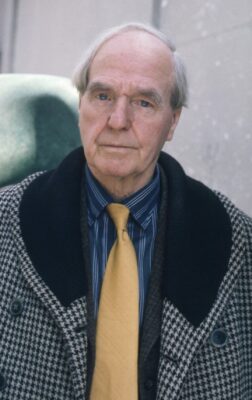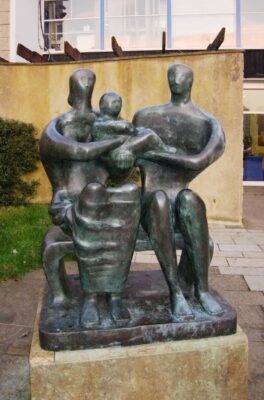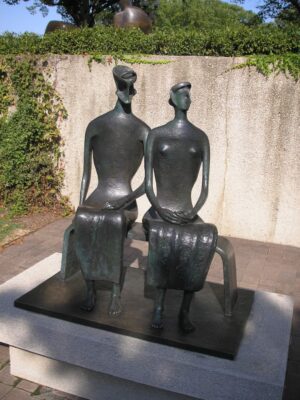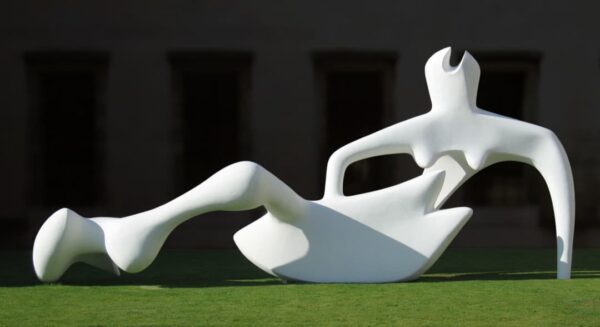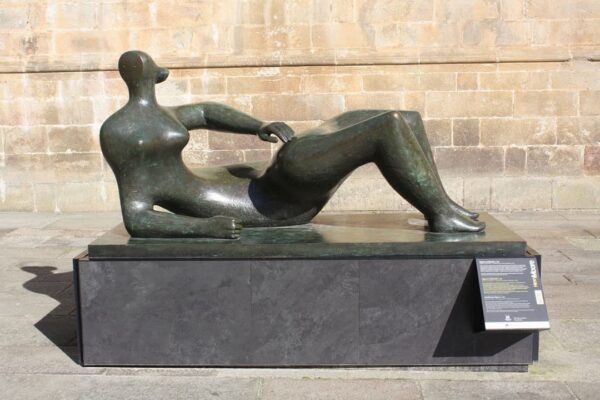Henry Moore
Along with Constantini Brancusi and Alberto Giacometti, Henry Moore (1898-1986) is arguably the most outstanding figure of the European sculpture of the 20th century. The son of a mining engineer, and raised in one of the most industrialized zones of Great Britain, Moore developed an exceptional mastery in working with bronze and marble, which allowed him to create a universe of forms and volumes that –from the early figuration to the late abstraction– constitutes one of the most important artistic legacies of the last century.
Image: Henry Moore in his workshop, 1975. Photo by Allan Warren.
During his career, Henry Moore “shunned intellectual speculation to concentrate on the models that life offered him, seduced by a form of vitalism that took its principal subject matter from the family, from mothers and their children, or from an isolated reclining figure” (Michel Conill Lacoste, “Sculpture in the 20th Century”, 1984). Although Moore is evidently famous for his sculptures (especially those on a monumental scale), it is remarkable his emphasis on drawing, sometimes a means to prepare his large sculptures and sometimes an end in itself, such as those created during the bombing of London during the World War II.
Henry Moore was born in Castleford, West Yorkshire (England ) in July 30th, 1898. He spent his childhood in a clearly industrialized environment, which perhaps helped him to find his early love of sculpturing forms. In fact, Moore became a sculptor when he was 11 years old, after studying the works by Michelangelo. After the World War I, in which he was injured during the Battle of Cambrai, Moore began to study in the Royal College of Art in London, where he created his first works, influenced by sculptors like Epstein, Brancusi, or even the already mentioned Michelangelo.
During the decade of the 1930s, Moore took part of the International Surrealist Exhibition, a movement that promoted the introduction of the surrealism in Great Britain . During this decade he began one of his most famous and recurrent compositions, his “Mother and child”.
The World War II supposed a lapse in Henry Moore’s life and works. He momentarily stopped his sculptural investigation and produced several drawings depicting how the War was affecting his compatriots. Moore took part in the International Artists Association, a movement of leftist artists and intellectuals against Nazism and Fascism. Moore himself was affected by the Great War: his house in Hampstead received the hit of a bomb. But Moore ‘s acts against the war did not end here. In fact, the sculptor was very affected by the Spanish Civil War, to the point that the first lithograph he produced, “Spanish Prisoner”, was sold to collect funds for the Spanish republicans exiled in France.
After the War, Henry Moore finally reached his artistic zenith and his international recognition, which culminated in important works like the sculpture made for the UNESCO building (1957) and another one for the University of Chicago. However, the works that have given Moore international fame are his “Reclining Figures”, masterful studies of the human figure, on different scales and with different materials. Many of these “Reclining Figures”, as it happens with many other large sculptures by Moore , are conceived to be exhibited outdoors, preferably in the middle of the English landscape.
Henry Moore died on 31 August 1986, and was buried in the Artist’s corner of St Paul’s Cathedral in London, as were other leading English artists such as Joseph Mallord William Turner.
More about Henry Moore
Follow us on:

